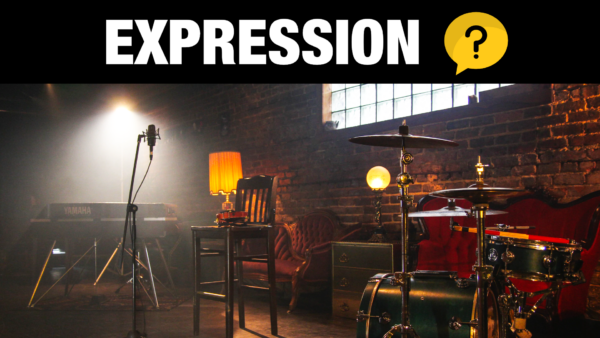 Music is not only about those notes you write, or not even the sounds and instruments, or effects you use.
Music is not only about those notes you write, or not even the sounds and instruments, or effects you use.
Music is about expression. Your goal as a music composer is to add life to your music stories. Do you want to master emotion and expression in your music? Check out my course here.
If you compose music with a lot of expression, the end result will be more organic and emotionally impactful. Because life, people, the world we live in…is dynamic.
You don’t want to write music that sounds robotic and lifeless. Instead, make sure to add variation, motion and movement into all parts of your composition. Change is the very essence of life, and that is why it is so important in music too. Let me give you some guidelines on things to focus on to make your music more professional, powerful and full of life.
1. Expression in the Dynamics
One of the greatest ways to add movement into your music, is by varying the intensity and loudness of notes. For MIDI this mainly controlled by the velocity value for each note. Avoid to simply copy and paste of parts, because you will end up with equal velocity values. If you do use copy and paste, make sure to go in and add variation in the velocity values for the new part compared to the first.
Many software instruments also have dynamics controlled by the MOD-wheel which you automate in your DAW. This is very common for long notes on orchestral instruments, like strings.
2. Expression in the Timing
Having everything quantized 100% to the grid is one of the most common mistakes music composers make when working in their DAW. It is a sin that should be avoided at all times. Because it will make your music sound lifeless, robotic and boring. Because it is unnatural to play every instrument and sound timed to the very millisecond.
In fact, what makes a string section sound big and wide is the minor difference of each player in the timing of the notes. So what should you do instead? Well, you can use quantization..but if you do…add those timing variations afterwards. One way is to dial back the quantization strength, which is what I most often do. Instead of 100% quantized I might use 75% which still leaves some of the timing variations.
Another way which is especially good if you write your notes by hand, because then all notes will be 100% on the grid…and that is to use a humanization feature in your DAW. Most DAWs has a feature that will randomize the timing of the notes, and even add slight variations to the note lengths. Even tiny variations make a huge difference when it all adds up on every instrument and part in your composition.
3. Expression in the Performance
Apart from intensity and timing, many instruments have lots of ways to add expression in the performance. One of the most common ways is to add vibrato to a note you hold. This is something you can often automate on software instruments like strings or brass…another great expression technique is to vary the note transitions. For example having some notes played in legato meaning the transition between the notes is softer, basically gliding into the new note. You might want to add a more distinct attack on some notes, by using a performance style like marcato. Or you might want to have some notes really short and distinct, like a staccato. The point is that you want to focus on adding expression in the very performance.
4. Expression in the Tempo
Tempo, meaning the BPM of your composition, is often overlooked. Especially for popular music styles it seems that the BPM is static throughout the entire track. But why not use this amazing dimension when writing your music story. Even for pop music you can automate the tempo to for example have the chorus a couple of BPM higher than the verses.
For live bands and in orchestral music, tempo is used to a great extent. Especially the ending of a composition, where it often slows down the tempo. And also in the transitions, which might slow down a bit to hold that part to create anticipation and tension, which will make the new part feel like a bless from heaven to the listener. I strongly recommend that you always use at least some tempo automation to add expression in the very pulse of your music.
Now let’s sum up what you Learned:
Music that moves you is full of expression. Like Life, music should be dynamic. It should be full of motion, movement and variation. Focus on these guidelines when you compose your music:
Expression in the Dynamics
Velocity values, or MOD-wheel automation to add movement and variation in the intensity of each note, and the internal movement of each note.
Expression in the Timing
Don’t quantize 100% to the grid. Because it will make your music sound lifeless, robotic and boring. Add expression in the timing by reducing the quantization strength on your parts, or use humanization features in your DAW to add variation in both the note starting points and note lengths.
Expression in the Performance
Use for example: vibrato, legato, portamento, marcato, staccato…and other playing styles to add expression in your performances.
Expression in the Tempo
Use this amazing dimension when writing your music story. Even for pop music you can automate the tempo to for example have the chorus a couple of BPM higher than the verses.
So, How do you make your music more expressive? Well, these 4 guidelines will help you a lot. Add expression in dynamics, note timing, the performance styles, and tempo automation. And finally: Always remember the golden rule of music: “Music should be like Life, full of dynamics, variation and movement”.

